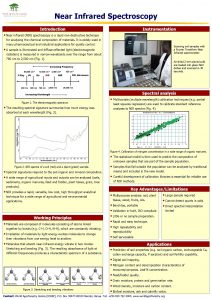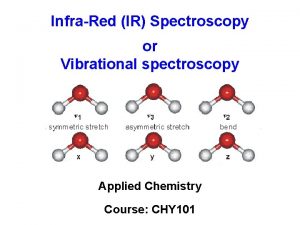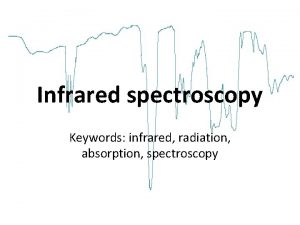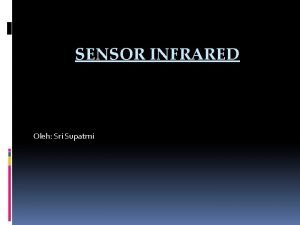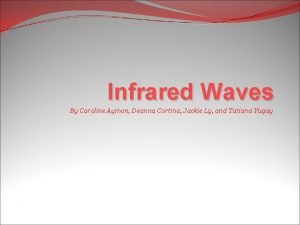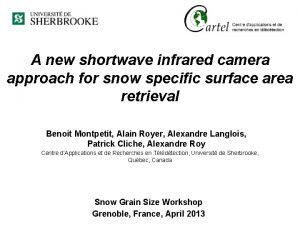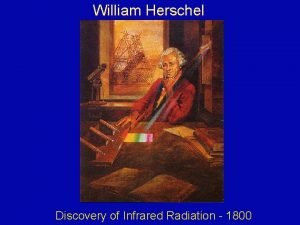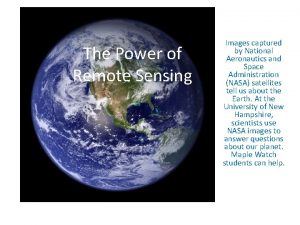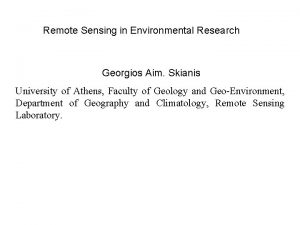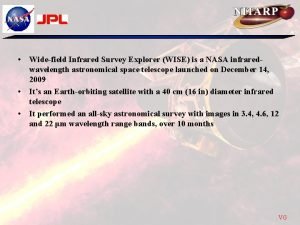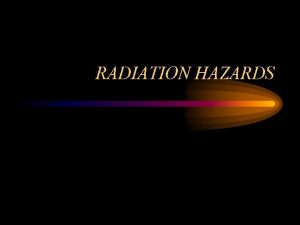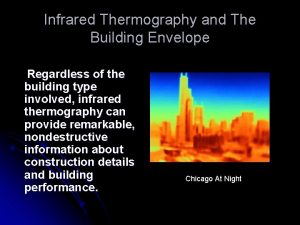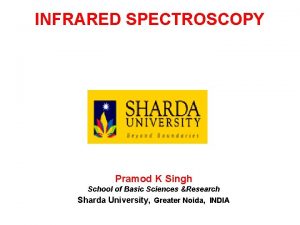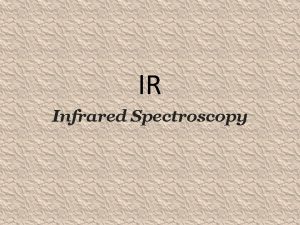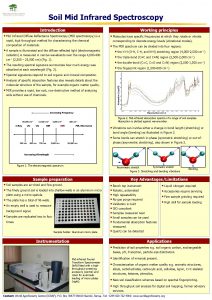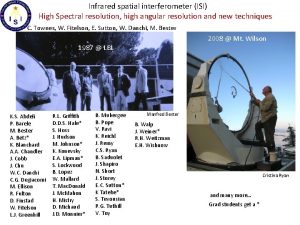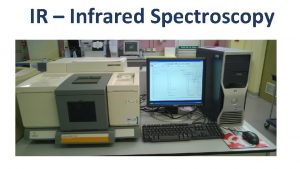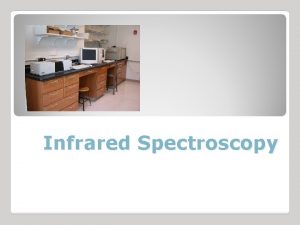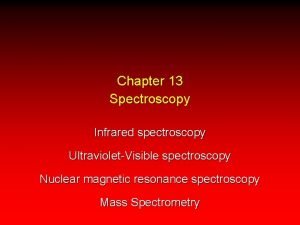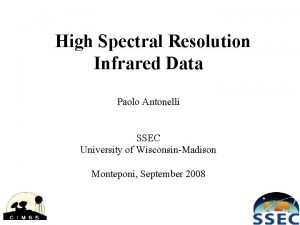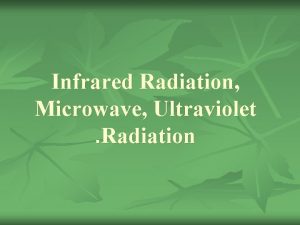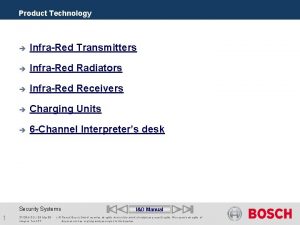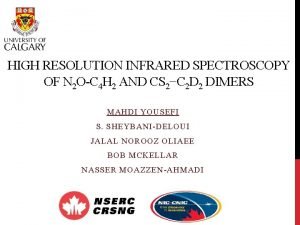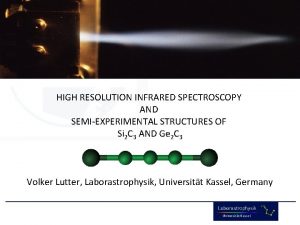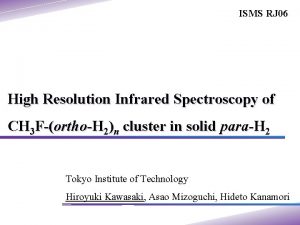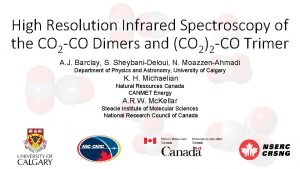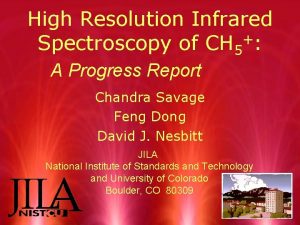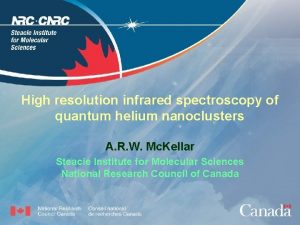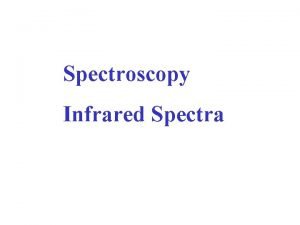High Spectral Resolution Mid Infrared Spectroscopy as a


























- Slides: 26

High Spectral Resolution Mid. Infrared Spectroscopy as a Probe of the Physical State of Planetary Atmospheres August 26, 2010 IGRINS Science Workshop 2010 1

Advantages of High Spectral Resolution • Increased sensitivity to unresolved spectral features (changes linearly with resolving power) • Increases spectral separation of observed emission or absorption features allowing for unique identifications of a multitude of molecular features when molecular rotation-vibration bands overlap. • Increases the amount of open spectral space to observation by reducing blending and increasing separation of telluric absorption features. • The line shape of resolved spectral features can be use to retrieve information on velocity of the gas (compact H 2 regions, galaxies, etc), information on vertical variation of temperature or abundance of molecules in a planetary atmosphere, or the ability to separate distinct clouds of gas along a given line of sight. IGRINS Science Workshop 2010 2

TEXES: Texas Echelon Cross Echelle Spectrograph • Operates between 5 and 25 mm • A ground based prototype for EXES, an instrument to be flown on SOFIA IGRINS Science Workshop 2010 3

Echelon Grating 0. 3 inch groove spacing 36 inches long 0. 03 inch groove height 0. 3” IGRINS Science Workshop 2010 0. 3” 4

A Detailed Study of Giant Planet Stratospheres NASA/JPL/Space Science Institute Probing Stratospheric Chemistry, Energetics, and Dynamics. T. K. Greathouse J. I. Moses J. H. Lacy M. J. Richter IGRINS Science Workshop 2010 5

General Atmospheric Structure Thermosphere Pressure (bar) Mesopause Mesosphere Stratopause Stratosphere Tropopause Troposphere IGRINS Science Workshop 2010 Temperature (Kelvin) 6

Process Dependencies ØInsolation ØLatitude ØSeason ØSolar Flux ØChemistry ØLatitude? ØSeason? ØMolecular Abundances ØLatitude? ØSeason? ØDynamic Mixing? Stratospheric Temperatures ØHeating ØAerosols ØChemistry ØInsolation ØAdvection? ØCooling ØMolecular Abundances ØChemistry ØAdvection? IGRINS Science Workshop 2010 7

Question: What molecules exist in the stratosphere? IGRINS Science Workshop 2010 8 Moses et al. 2000, Icarus.

Using Doppler Shifts for Unambiguous Detection of C 3 H 8 First Detection of Propane on Saturn -20 10 Latitude -80 10 Latitude IGRINS Science Workshop 2010 9

First Detections of C 2 H 4 in Neptune ISO Schulz et al. 1999 IGRINS Science Workshop 2010 10

A Second Detection AKARI data Fletcher et al. 2010 IGRINS Science Workshop 2010 11

The First Spectrally Resolved Detection of C 2 H 4 on Neptune IGRINS Science Workshop 2010 12

Spectral Line Separation The Unambiguous Detection of C 3 H 8 • Measure weak lines • Measure features in crowded spectral regions Propane on Titan Roe et al. 2003 IGRINS Science Workshop 2010 13

Seasonal Studies IGRINS Science Workshop 2010 14

Temperature Retrievals • Using thermal emission spectra to retrieve temperatures requires knowledge of mixing ratio of observed molecule. • Methane serves this purpose. • Homogeneously mixed vertically and horizontally we can use this useful molecule as a thermometer. IGRINS Science Workshop 2010 15

southern spring southern winter southern summer 16 Courtesy Glenn Orton

CH 4 emission from – 80° latitude IGRINS Science Workshop 2010 17

Temperatures from 2002 -2009 IGRINS Science Workshop 2010 18

IGRINS Science Workshop 2010 19

20

21

IGRINS Science Workshop 2010 22

IGRINS Science Workshop 2010 23

Ethane Spectrum with Missing Features IGRINS Science Workshop 2010 24

A Few Project Ideas for IGRINS • Auroral studies on Jupiter – IGRINS gives access the simultaneous acquisition of H 2 and H 3+ emission features. • Cloud elevation studies on Saturn and Jupiter. • Occultation observations – Very good probe of CH 4 vertical density distribution. • Comet Observations • Kuiper belt objects probably best left to GMTNIRS IGRINS Science Workshop 2010 25

IGRINS Science Workshop 2010 26
 Near infrared spectroscopy instrumentation
Near infrared spectroscopy instrumentation Ir spectrum of ethyl acetate
Ir spectrum of ethyl acetate Infrared spectroscopy theory
Infrared spectroscopy theory Infrared spectroscopy ppt
Infrared spectroscopy ppt Infrared spectroscopy
Infrared spectroscopy High resolution low resolution
High resolution low resolution Infrared vs bluetooth
Infrared vs bluetooth Infrared vs bluetooth
Infrared vs bluetooth Pengertian sensor infrared
Pengertian sensor infrared Light energy bill nye
Light energy bill nye Tatiana yugay
Tatiana yugay Infrared spektroskopisi
Infrared spektroskopisi Signage posted at a handwashing station must include
Signage posted at a handwashing station must include Shortwave infrared camera
Shortwave infrared camera Bluetooth vs infrared
Bluetooth vs infrared Hybridboard
Hybridboard Herschel infrared discovery
Herschel infrared discovery Thermal infrared
Thermal infrared Ers-1
Ers-1 Touch screen advantages and disadvantages
Touch screen advantages and disadvantages National infrared operations
National infrared operations Wide field infrared survey explorer
Wide field infrared survey explorer Wavelength scale
Wavelength scale Infrared radiation hazards
Infrared radiation hazards Infrared sensor principle
Infrared sensor principle Infrared building envelope
Infrared building envelope Made up school
Made up school
